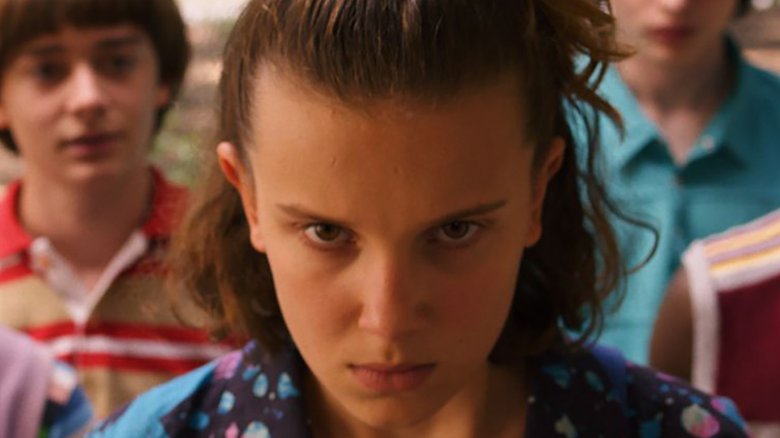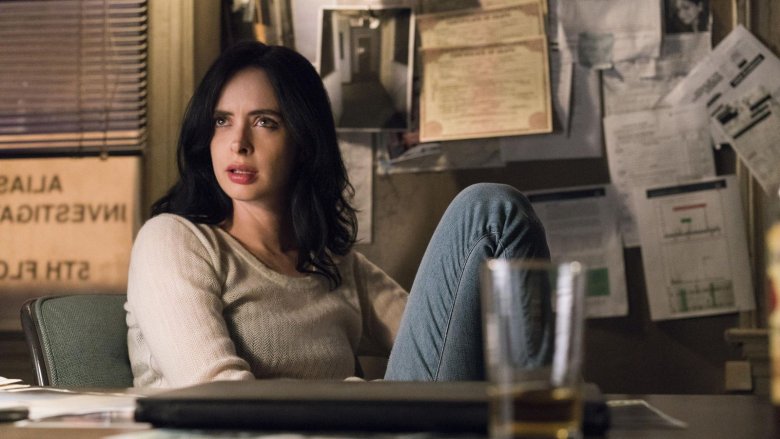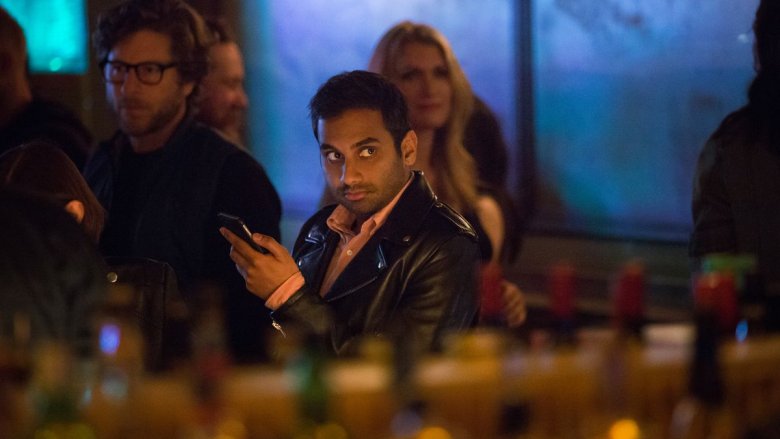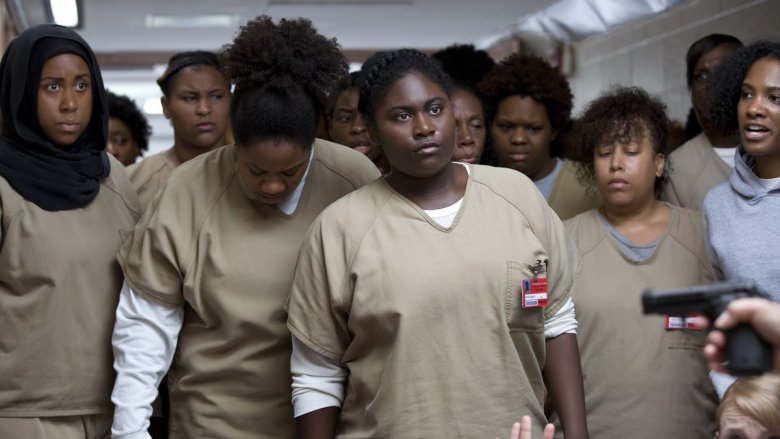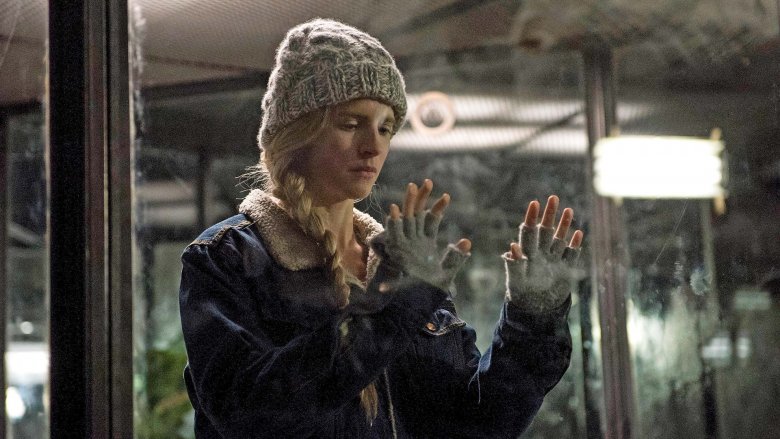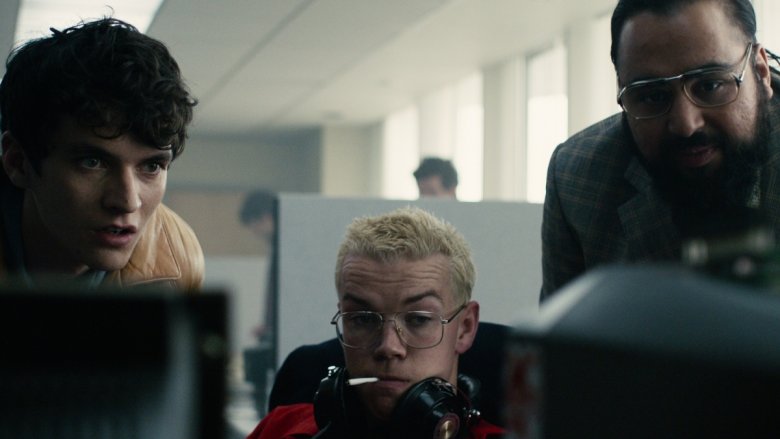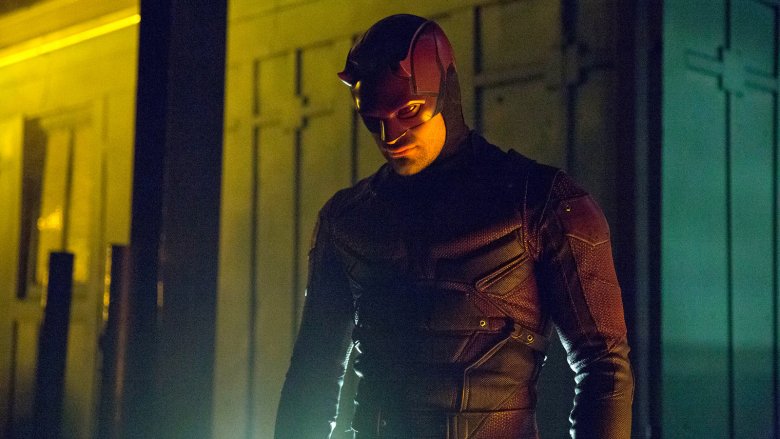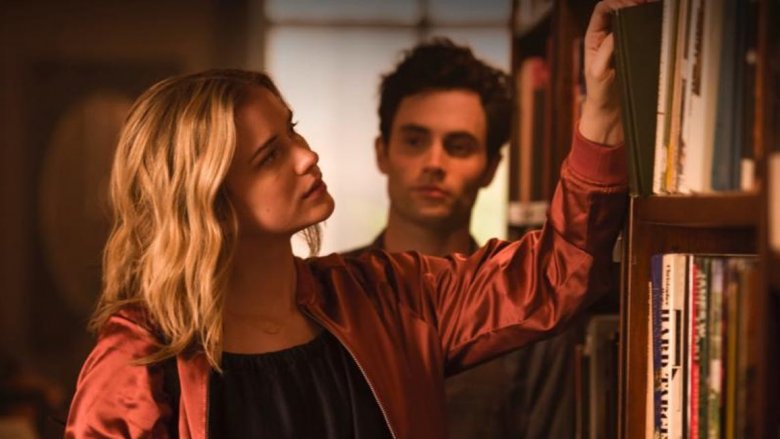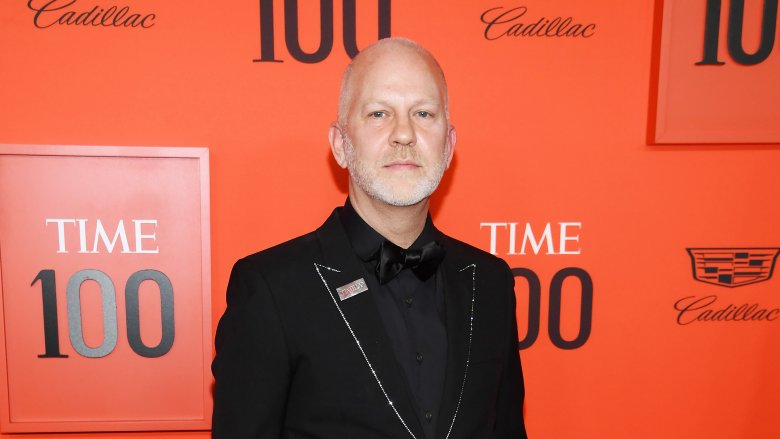The Real Reason Netflix Won't Share Viewer Numbers
When Netflix launched in 1997, no one could have predicted that it would someday evolve into the entertainment juggernaut it is today. What started as a simple DVD rent-by-mail service has turned into one of the largest entertainment platforms in the world, one that's known for some of the highest quality programming in the television industry. Netflix shows have racked up dozens of awards, and the company is at a point now where it's courting some of the biggest names in Hollywood.
But how do we actually know that Netflix programming is successful? For years, the company has been notoriously vague about its viewership data. And although companies have tried to figure out Netflix's numbers, the entertainment titan has been adamant that their estimations are wrong. Finally, in April 2019, Netflix chief content officer Ted Sarandos said (via Broadcasting Cable) that the company would start to be more forthcoming with its data. Don't assume this means Netflix is going to start releasing everything to the public, though: there are plenty of reasons why the company still wants to keep its information under wraps.
Netflix says ratings systems are inaccurate
In 2017, the data collection service Nielsen launched Nielsen Subscription Video On Demand Content Ratings, which was aimed at measuring audience data for services like Netflix. Like Nielsen, the company Symphony Advanced Media threw its hat in the ratings ring, confident that it could accurately track streaming viewership. But according to Ted Sarandos, services like these are wildly inaccurate.
Back in 2016, NBC, having used data from Symphony, claimed to have been able to measure viewership for specific Netflix series, including Jessica Jones, Narcos, and Master of None. At the Television Critics Association press tour (via Variety), Sarandos refuted the claim, saying it "doesn't reflect any sense of reality of anything that we keep track of." He called the focus on instant ratings data "remarkably negative in terms of its effect on shows," and essentially said that it was of little importance whether or not something was watched within a day or two. What's most important, according to Sarandos, is that people are watching.
Netflix just works differently than live TV
When NBC claimed that it had measured Netflix's viewership, it tried to prove that it was better at getting viewers than the online platform — or at least, that's how NBC tried to paint it. According to Vox (which NBCUniversal invests in), NBC was taking into account Netflix's "Live+35 viewership," which is the number of viewers who watch a show within the first 35 days of airing. For a company like NBC, where live television makes up the bulk of its business, the Live+35 numbers are extremely important.
But Netflix isn't working by the same set of rules. Netflix's model works on the assumption that whatever a viewer wants to watch, whenever they want to watch it, Netflix will have it available for them. It's how subscription models operate: you pay a flat fee to have your stuff available to you at any time, even months after launch. Because Netflix has already gotten your money, it doesn't really matter to the company how exactly you choose to use its product.
Netflix doesn't sell advertising
There's another big thing about traditional rating systems: the reason companies like NBC rely so heavily on Live+ numbers is that the farther away from live a TV show gets, the less likely it is to pull in ad revenue. For NBC and other big networks, ad revenue is what keeps them in business.
Netflix doesn't use ads, and according to the company (via Variety), it has no plans to do so in the future. But in September 2018, Netflix subscribers started to wonder about the future of their streaming service when the company ran a limited test that threw short (skippable) promos for other shows in between episodes that were being binged. According to a survey conducted by Hub Entertainment Research, 23% of Netflix users said they'd cancel their service if ads became a thing. Only 14% of subscribers said they'd for sure keep it, should Netflix head down the commercial route.
But according to Netflix's long-term view investor statement, the company has no desire to ever go that route, even eschewing the lower price with ads model that companies like Hulu have adopted. "We don't offer pay-per-view or free ad-supported content," the company said. "Those are fine business models that other firms do well. We are about flat-fee unlimited viewing commercial-free."
Netflix doesn't own some of its biggest hits
Take a look at a show like Orange Is the New Black, a huge hit for the streaming service: it's highly regarded by critics, and it's been a huge contender during awards season, having racked up over 130 nominations throughout its seven-year run. But Netflix doesn't actually own Orange Is the New Black. Instead, it licenses it from a studio.
Typically, licensing fees are negotiated for a few seasons at a time. It's a flat rate per season, so whatever production costs are incurred, they're paid for by the studio — not Netflix. If something goes over budget, Netflix has already paid to use it. Likewise, if a show is immensely successful (like, say Orange Is the New Black), Netflix doesn't have to worry about paying more for that, either.
So by keeping viewership numbers private, Netflix actually has an edge in licensing negotiations between studios. Because if a studio doesn't know how popular a series is, it's harder to push for more money.
Licensed content is still doing better than Netflix originals
Netflix has made some serious strides in producing original content; in 2018, the company even went as far as to purchase ABQ Studios in New Mexico, with the goal of putting over $1 billion into productions over the next decade. But as it stands right now, the streaming platform's biggest draw comes from the content it doesn't own.
According to Variety, at the end of 2018, only 37% of the content streamed was a Netflix original. That other 63%? People really love The Office, it seems. But having seen what Netflix can do in terms of streaming, now other companies want in on the game. AT&T's WarnerMedia and NBCUniversal are both slated to launch streaming services by 2020. And at the end of 2019, Disney will launch Disney+, its own subscription video on demand service. Everything these companies own — and they own a lot — is going to be brought into their own platforms. What that means for Netflix is that it's going to have to figure out a way to bring in other content.
Losing the content that actually keeps viewers invested is a huge blow for the company. By withholding or refuting viewership numbers, particularly those related to licensed content, Netflix is able to maintain a more powerful position in the streaming wars.
Netflix is losing subscribers
Netflix would have you believe that its original content will be able to sustain the huge losses it's going to face in the next couple of years. According to MarketWatch, in 2018, the company spent $13 billion on content, with 85% of that going toward originals. With content costs expected to increase over the following year, MarketWatch predicts that Netflix will be spending upwards of $17.5 billion in 2019.
This would be all fine and good, except for the fact that Netflix's subscriber count isn't growing at the same rate. In its July 2019 letter to shareholders, the company said that paid membership grew by 2.7 million, which is far below the 5 million expected for the quarter. Still, it's predicting a 7 million member increase over the next couple of months.
So what does this mean for viewership? Currently, it means that Netflix is losing it, and the company seems to think its focus on original programming will save it. But, as we already know, Netflix viewers prefer licensed content to originals — perhaps by keeping specific numbers under wraps, the company can appear in a better light to its investors.
Netflix may have a flawed business model
Netflix's decision to throw money at originals, on the assumption that its subscriber rate is going to continue to grow at the pace it did a couple of years ago, seems a little flawed. For one thing, Netflix originals are not what its subscribers are watching. As much as the company would like to believe that the people who watch Netflix for Friends or The Office will switch over to some of the platform's own content when they're gone, there's no guarantee it will go down that way.
Still, Netflix is betting it will. It's also betting that half of the entire world's population will be signing up for the service. According to a study done by New Constructs, that's exactly what Netflix would need to be able to stay in business — that, or it will have to continue to raise its prices. The last time Netflix increased its rates, it lost subscribers. Right now, it seems like Netflix is just throwing out projections based on what the company wants to happen, instead of what really can happen. And because it doesn't take specific ratings into account when it comes to investors, it can basically say whatever it wants about all those people who watch licensed content.
Netflix is losing its footing in the streaming game
The world of streaming is getting a lot more crowded, and as the market space fills, Netflix's hold on it will dwindle. As companies like Disney, AT&T, and Comcast continue to focus on launching exclusive content platforms, Netflix will have to put more energy into its own originals.
Netflix needs to maintain a foothold in order to survive. When it comes to losing close to 20% of its entire content library (which CNBC says it will), it needs to look like that content doesn't matter. Viewership statistics won't help Netflix, because they point to the fact that what's being viewed isn't company-owned. What's important for Netflix, especially in its current position, is subscriber count. And the only way to maintain that is to create better original programming.
For its part, Netflix doesn't seem to be worried; its CEO, Reed Hastings, thinks there's plenty of viewing hours to go around: "There's a billion hours of television content being consumed today [in the U.S.] ... Disney, they have great content. We're excited for their launch, and maybe they grow over a couple years to 50 million hours a day, but that's out of the billion."
Netflix works on a global scale
When Netflix said in early 2019 (via Vox) that 40 million of its accounts had watched both You and Sex Education, it seemed completely unbelievable at first. That's because there are only about 329 million people in the United States, so if 40 million of them had tuned into one of those shows, like the company said there had, it would be the equivalent of about 12% of the American population. It's a little unrealistic.
But Netflix doesn't mean 40 million accounts in America — when Netflix talks viewership, it counts the entire world. As far as the company is concerned, a system like Nielsen's (which measures domestic ratings) isn't built for what Netflix does. Netflix views itself as a global company, so ratings would have to take into account what's being watched around the entire world. By the way, that also means the numbers that the company is throwing out there are out of about 6 billion people, not just 329 million (Netflix does not operate in China).
Taking all of that into consideration, Netflix's domestic ratings aren't any better than any of the big networks. But by talking about its viewership on a global scale, the company is able to make its numbers at least seem much better than network competition.
Netflix picks and chooses which numbers to share
Did you watch Netflix's Adam Sandler/Jennifer Aniston led comedy Murder Mystery? If the answer is no, you're in the minority. At least, according to Netflix you are. The popular account Netflix Is A Joke tweeted out a statistic that revealed nearly 31 million accounts watched the movie in its first three days (Variety confirmed with a Netflix spokesperson that the data was accurate). The news means that Murder Mystery is the biggest film to ever open on the streaming platform.
According to CNBC, however, Netflix counts something as viewed if it's only been 70% watched. So, in spite of the 31 million people who got at least 70% of the way through Murder Mystery over that weekend, as far as total hours watched worldwide goes, the film didn't actually do as well as Netflix makes it seem. But when Netflix throws out numbers that sound bigger than they really are, the company appears as though it's doing much better than it probably is. It looks like a heavy hitter in the industry.
Netflix wants to lure in big name talent
With Netflix in control of the numbers that are released to the public, it's easy to make the company seem more desirable to outside talent. After all, if Netflix original programming is bringing in 31 million viewers over its opening weekend, who wouldn't want to work for the company?
Both 2018 and 2019 have been big for Netflix and Hollywood talent. According to IndieWire, Netflix picked up some big contracts in 2018, including American Horror Story's Ryan Murphy, who signed a five-year deal worth $300 million. Likewise, Shonda Rhimes (Grey's Anatomy) signed on with the streaming service for $150 million. In 2019, The Hollywood Reporter broke news that David Benioff and Dan Weiss (the duo behind Game of Thrones) had closed a $200 million multiyear deal that would include both film and TV projects.
Netflix is courting some of the biggest names out there, and in order to do so, it needs to put itself in the best possible light — which means releasing the "right" numbers to the public.
It's easy for Netflix to lie about viewership
When it comes right down to it, Netflix is in a position where, really, it can throw out whatever viewership numbers it wants, because streaming is still such a new way to watch TV. And, because Netflix isn't looking at live numbers or just American accounts, any viewership number it reports to have is going to seem large compared to the typical Nielsen ratings regular networks live and die by.
So it's easy for Netflix to say (via CNN Business) something like, "Sex Education ... is on pace to be watched by over 40 million accounts over its first month," because there's no evidence to prove otherwise. That doesn't mean that people aren't calling the company out for its exaggerated estimates, though. New York Times TV critic James Poniewozik tweeted in January 2019, "Sooooo we're just taking Netflix's self-reported numbers as fact now, cool, cool," while The Hollywood Reporter's Daniel Fienberg tweeted, "It's official: Netflix tweeting utterly BS ratings — guessing on the first month ratings of a show that's been out for 12 days — is actually worse than no Netflix ratings."
Netflix doesn't actually look into viewership statistics
All of this boils down to one thing, and it's a big thing: with Netflix in a position to discredit any traditional means of measuring its audience, there is no one out there keeping the company — and its reported statistics — in check. Netflix reports that 31 million people watch a movie, but how does anyone know for sure?
CNN Business notes that what Netflix lacks is "nuance and third party verification." According to the publication, big TV networks conduct their own in-house research on viewers, but outside companies like Nielsen keep those numbers in check. Netflix has no outside company looking over their statistics, and why would they want one? The streaming service's biggest concern is on subscriber rates, not who that subscriber is or what kind of household they come from (things that Nielsen also gathers information on).
But once a third party company cracks the code on how to collect Netflix viewership data (which is inevitable), what hold will Netflix have over the streaming game?
